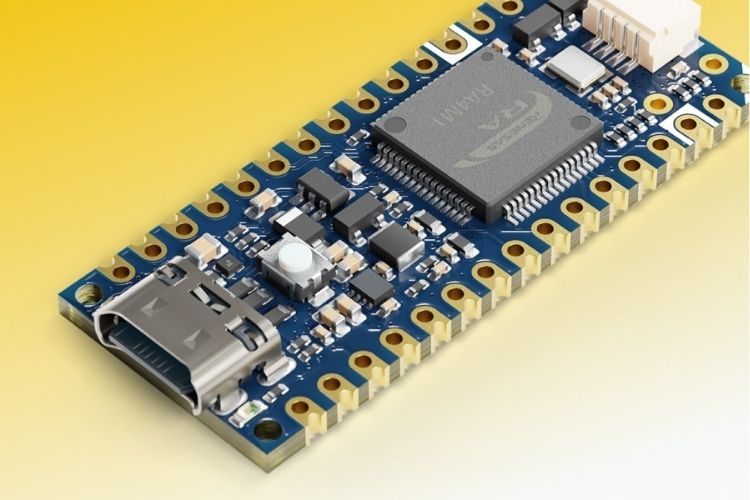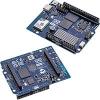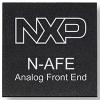Arduino Nano R4 Launches with RA4M1 MCU and Dual I2C Ports

Arduino has unveiled the Nano R4, a compact development board that’s based on the Renesas RA4M1 microcontroller (Arm® Cortex®-M4). It’s built to fit the needs of space-constrained embedded systems and offers 256 kB Flash, 32 kB SRAM, and 8 kB EEPROM, running at 48 MHz.
Retaining full compatibility with Arduino’s toolchain, it enables integration into custom hardware with castellated pins and a slim-profile single-sided layout. To deal with power interruptions, the board has a dedicated VRTC pin to keep the real-time clock (RTC) running. It offers dual I2C ports via a Qwiic connector and A4/A5 header pins. This enables the flexible integration of sensors and peripherals.
A programmable RGB LED offers real-time visual cues for developers. With USB-C power, 5V logic-level GPIOs, and peripheral-rich connectivity, the Nano R4 simplifies prototyping for low-power systems, smart IoT nodes, and embedded automation. It is available in two variants: pre-soldered headers (ABX00143) at $13.30 and the ones without headers (ABX00142) for $12.10.
Key Features of Arduino Nano R4
-
Renesas RA4M1 MCU: Arm® Cortex®-M4, 48 MHz
-
256 kB Flash, 32 kB SRAM, 8 kB EEPROM
-
Dual I2C ports: 5V (A4/A5) and 3.3V (Qwiic)
-
Real-Time Clock (RTC) with backup battery pin
-
USB-C powered with 5V logic compatibility
-
Programmable RGB LED for debugging
-
21 digital I/Os, 8 analog inputs, DAC, CAN, UART, SPI
-
Compact footprint with castellated edge or headered variant
-
Breadboard-friendly and surface-mount capable designs
Applications of Arduino Nano R4
-
Space-constrained embedded and IoT systems
-
Smart sensor nodes and peripheral control hubs
-
Industrial monitoring and automation
-
Low-power data logging with real-time timestamping
-
Prototyping platforms for modular electronics
-
Educational tools for MCU development and debugging
-
Direct integration into custom PCBs via castellated pins









